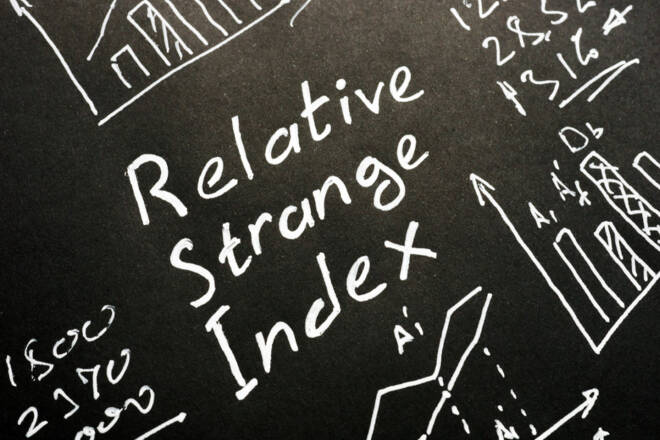Advertisement
Advertisement
How to use the RSI indicator
Updated: Jul 27, 2022, 14:22 GMT+00:00
Intro
RSI is constructed by looking at a computation in which average gains are divided by average losses over a specified period. 14 (days, weeks, or minutes) is the indicator’s most popular setting.
Relative Strength Index
In 1978, Welles Wilder Jr. introduced the Relative Strength Index (RSI). The RSI identifies overbought and oversold readings that predict cycle reversals by analyzing the characteristics of recent price changes. It fluctuates between zero and 100, with a reading above 70 usually denoting an overbought security and a reading below 30 typically denoting an oversold security. In contrast to Stochastic, RSI generates a single value that reacts to the latest price bar.
The indicator uses a formula to calculate the magnitude of recent losses to recent gains to tell when the market is likely to be at an overbought or oversold level.
The formula itself is simple and calculated as below, then presented as an oscillator:
RSI = 100 – 100(1 + RS)
In this instance, RS refers to the average of the assets day up closes divided by the average of the assets day down closes.
RS = Average of days’ up closes / Average of days’ down closes.
Using this formula, it is possible to garner values stretching from 0 – 100. These values are then used to represent momentum within the market which can be plotted directly below the price chart as an oscillator.
In theory, the higher or lower the value of the oscillator, the stronger the momentum within the market. However, in practice, due to the way the formula is calculated, the RSI will rarely go higher than 80, or lower than 20. It is therefore much more common to use the levels 70 and 30 for trading decisions.
Thus, when the RSI is above 70, the market is deemed to be in an overbought condition and when it is below 30, the market is oversold. The best strategy is therefore to initiate a buy when RSI crosses under 30 and to go short when RSI crosses over 70.
This is the typical way to use the RSI, however the indicator can also be used in the reverse way – in order to follow trends. Using this method, a trader buys the market when the RSI crosses over 70 and does not sell until it crosses back under 30. Conversely, you can short the market when the RSI crosses under 30 and buy back when it crosses over 70.
Divergence
As well as measuring momentum, the RSI can indicate divergence. For example, let’s say a currency has made a new high but the RSI has just turned down (it has not made a new high). In this case, the market is showing signs of decreasing momentum – even though the price has gone up, it has not been accompanied with an increasing RSI.
About the Author
Advertisement
Advertisement
Advertisement
Advertisement
Advertisement
